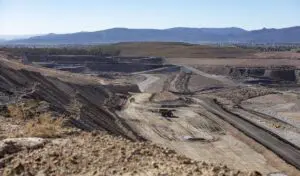Global investment in new clean energy projects needs to rise dramatically if the world is to achieve zero net emissions – but a shift to grids based around lower-cost wind and solar will leave consumers better off, a new study says.
The global study, completed by infrastructure design consultancy Arcadis, estimates that a total of $9.9 trillion in new energy infrastructure investment is needed between now and 2050 in ten major markets. The investment peak will be A$1.29 trillion in 2028 – representing a massive ramp-up in investment from current levels.
For Australia, Arcadis has estimated that $165 billion would need to be spent on new clean energy projects over the next eight years if Australia is to put itself on a pathway to net zero emissions by 2050.
This capital expenditure would include $110 billion in new investment on new solar, wind and hydroelectricity projects, with an additional $55 billion in new transmission and distribution network infrastructure.
The study estimates that Australia’s annual investment in new renewable energy projects would need to peak in 2030 at $21 billion – almost triple the estimated $7.7 billion that was invested in 2020.
After more than a decade of delays and uncertainty around national energy and climate policies, which has put the country at the tail end of the energy transition, the study found that Australia now faces one of the steepest tasks in transforming its energy system.
“The model shows Australia has one of the steepest – and most unrealistic – timetables, needing to halve emissions within two years,” Arcadis said in a statement.
“This would require adding 9.3GW of clean energy capacity and developing significant and workable carbon capture and storage (CCS) projects to remove emissions associated with 8.5GW of fossil fuel generation.”
While this level of investment is ambitious and beyond anything previously achieved in Australia, Arcadis found it would ultimately leave energy consumers better off – with Australia in a position to cut costs faster than international peers.
“The transition could mean consumers in some countries see a reduction in bills long before others. Across Europe, for example, supercharging the transition would result in energy bill savings later in the transition compared to Australia, Brazil, China, India, and the USA,” the study says.
“By 2045, however, the consumers in all ten markets in this study would have access to both a low-carbon electricity grid and a reduction in overall energy bills.”
Across the ten countries considered by the study, energy consumers were estimated to be saving $106 a year in energy costs by 2030, growing to $323 a year by 2050, should the ambitious investment in new energy infrastructure was made to reach zero net emissions.
The study simulated the energy pathways needed to get to net zero emissions across Australia, China, the United States, Brazil, the UK, France, Germany, India, the Netherlands and Belgium.
Arcadis’ Australian lead for energy and resources, Luke Keys, said that the assessment was a “sobering reality check” on the scale of the task ahead of countries like Australia to successfully achieve a target of zero net emissions.
“Even if we were able to flip the switch to a world where all governments committed themselves to the 2050 goal, the speed of transition and innovation required to get to net-zero in time to keep warming under 1.5 degrees make the goal extremely tough to achieve,” Keys said.
“In Australia’s case, getting to net zero in the timetable defined in this study seems impossible.”
Keys added that it was likely that governments would need to begin preparation for the future impacts of global warming that already appear to be locked in.
“Unfortunately, the only conclusion we can make is that while doing everything we can to reduce emissions, we also need to begin planning for the impacts of global warming. At a practical level this means a focus on more resilient infrastructure, industries and supply chains, and coordinated policy across all levels of Government,” Keys said.
The study suggested that limiting global warming to just 1.5 degrees may no longer be practically achievable, given the rapid reductions in emissions needed – as indicated by a recent authoritative assessment published by the IPCC, – but still provided an indication of the scale of change that governments need to be aiming for.
“If we were to progress to a global net zero economy, consistent with a 1.5°C scenario, all countries in our study would need to cut their energy sector emissions in half by 2029, with most countries having to halve their emissions within the next four years,” the study says.
“Although this scenario is not practically achievable, understanding how rapid transition would ideally happen provides a target for us to work towards.”








